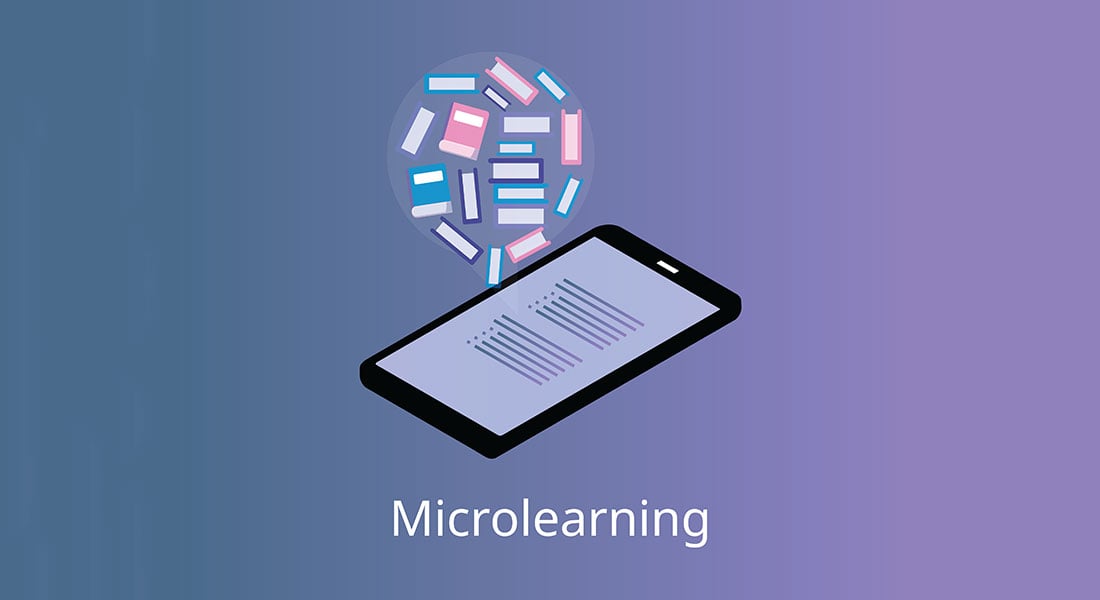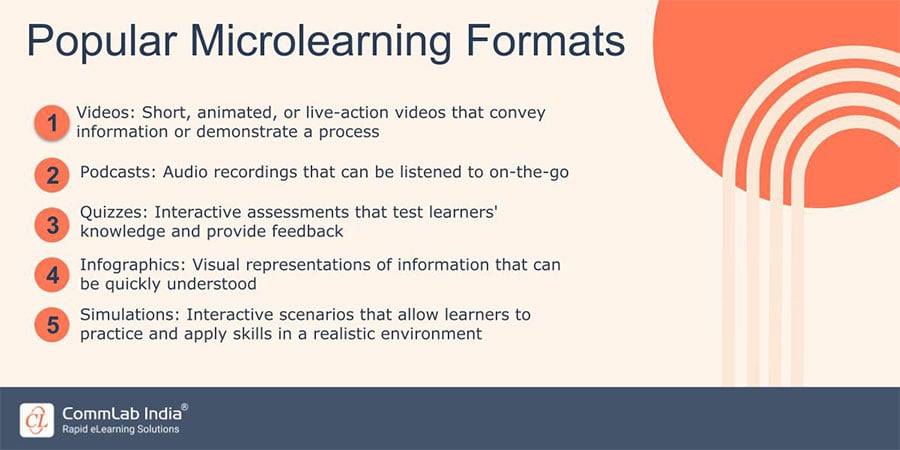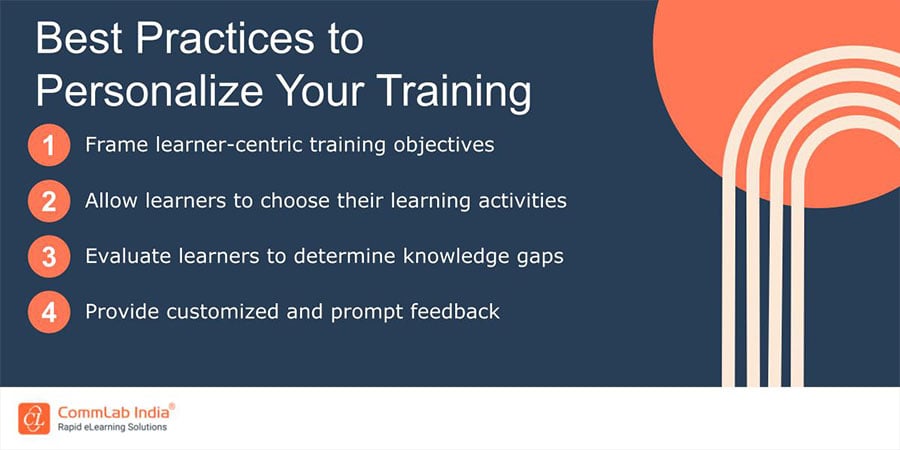Mastering Skills in Minutes: An Introduction to Microlearning
Microlearning is a learning method that delivers content in small, easily digestible chunks. The purpose of this blog post is to provide an introduction to microlearning, explain its benefits, and provide tips for designing and implementing effective microlearning programs.

Are you tired of snooze-worthy training sessions that make you feel like you’re back in grade school? Well, fear not my friend, because microlearning is here to save the day (and your sanity). Think of microlearning as the “snackable” version of traditional learning – small, bite-sized pieces of information that you can consume on the go, without needing to schedule a whole day for training. And who doesn’t love a good snack, right?
In all seriousness, though, microlearning is a powerful tool for delivering learning content in a way that is accessible, engaging, and effective. In this blog post, we will introduce the concept of microlearning, explain its benefits, and provide tips for designing and implementing effective microlearning programs.
The Microlearning Revolution: Say Goodbye to Traditional Training Methods!
Here are the primary benefits of getting started with microlearning:
- Improves knowledge retention and its application
- Increases learner engagement and motivation
- Reduces time and cost of training for organizations
What is Microlearning?
Microlearning is a learning method that delivers content in small, easily digestible chunks. It is typically delivered through digital media such as videos, podcasts, quizzes, and simulations, and can be accessed anytime, anywhere. Microlearning focuses on specific learning objectives and is designed to be completed in a short amount of time, usually less than 10 minutes.
→ Download eBook Now: Where Does Microlearning Fit in Your Learning Strategy?
In today’s fast-paced world, learners face a constant stream of information and distractions, making it difficult to focus on learning for long periods. Microlearning addresses this challenge by breaking down complex topics into small, easy-to-digest pieces that can be consumed on the go. This makes learning more accessible and flexible, allowing learners to fit it into their busy schedules. It is not just about delivering short videos or quizzes, but about designing content that is focused, relevant, and engaging. Microlearning is designed to help learners acquire new knowledge and skills quickly and efficiently and to reinforce learning through repetition and application.
Different Types of Microlearning Formats and How to Choose The Right One
There are several types of microlearning formats that can be used to deliver learning content. These include –

When choosing a microlearning format, it is important to consider the type of content you want to deliver and the learning objectives you want to achieve. For example, a complex process may be better conveyed through a video, while a simple concept may be better suited for an infographic. It is also important to consider the preferences and learning styles of your learners.
Top 3 Benefits of Microlearning
1. Improves Knowledge Retention and Its Application
Microlearning delivers content in small, bite-sized pieces that are easy to digest and understand. By focusing on one topic or learning objective at a time, learners are less likely to become overwhelmed or distracted, which can help to improve their ability to retain information. Microlearning often includes opportunities for learners to practice and apply what they’ve learned, which is essential for retaining information and transferring it to real-world scenarios. Through activities such as quizzes, simulations, or case studies, learners are given opportunities to apply their knowledge and receive immediate feedback, which helps to reinforce the learning.
Microlearning is often designed to provide context and relevance to the learning content, which can help learners better understand and retain the information. By incorporating real-world scenarios and examples, learners are able to see how the information they are learning can be applied in their own work and life situations. Many microlearning programs incorporate gamification elements, such as points, badges, and leaderboards, which can increase engagement and motivation. By making the learning experience fun and interactive, learners are more likely to stay engaged and retain the information.
2. Increases Learner Engagement and Motivation
Microlearning provides small and easily digestible content that can be accessed anytime and anywhere, making learning more convenient and flexible for learners. This allows them to engage with the content at their own pace and on their own schedule, which can increase their motivation to learn. Microlearning typically uses interactive and engaging formats such as videos, games, comic strips, and flashcards to deliver the content. This can help to make the learning experience more enjoyable and interesting, which can increase engagement and motivation among learners.
Microlearning is often designed to be personalized and relevant to the learners’ needs and interests. By providing content that is tailored to their specific needs, learners are more likely to feel engaged and motivated to learn. Microlearning often includes immediate feedback and recognition to create a sense of accomplishment and progress, which can help to increase learner motivation and engagement. Check out a few best practices to personalize your training below –

3. Reduces Time and Cost of Training for Organizations
Microlearning delivers content in small, bite-sized pieces that can be completed in a short amount of time. This means that learners can access and complete the content quickly, without needing to spend multiple hours in traditional classroom-style training sessions. Microlearning programs are often designed to focus on specific learning objectives or skills, which means that irrelevant or unnecessary content can be eliminated. This can help to reduce the time and cost of training by streamlining the learning process and avoiding unnecessary information that learners may not need.
Microlearning is designed to be available on demand, which means that learners can access the content at any time and from any location. This eliminates the need for learners to travel to training locations or wait for scheduled training sessions, which can save time and money. Microlearning programs are highly scalable, which means that they can be easily scaled up or down depending on the needs of the organization. This means that as the organization grows, the microlearning program can be expanded to accommodate new learners, without incurring additional costs.
Wrapping Up!
Microlearning is a powerful method of delivering learning content that offers several benefits for learners and organizations. By breaking down complex topics into small, easily digestible pieces, microlearning makes learning more accessible, flexible, and engaging. If you are planning to get started with microlearning, you can check out this amazing eBook and stay ahead of the curve. Grab your copy now!





![Microlearning Videos 5 Best Practices for Designing Them [Infographic]](https://blog.commlabindia.com/hubfs/microlearning-videos-effective-designing-infographic.jpg)